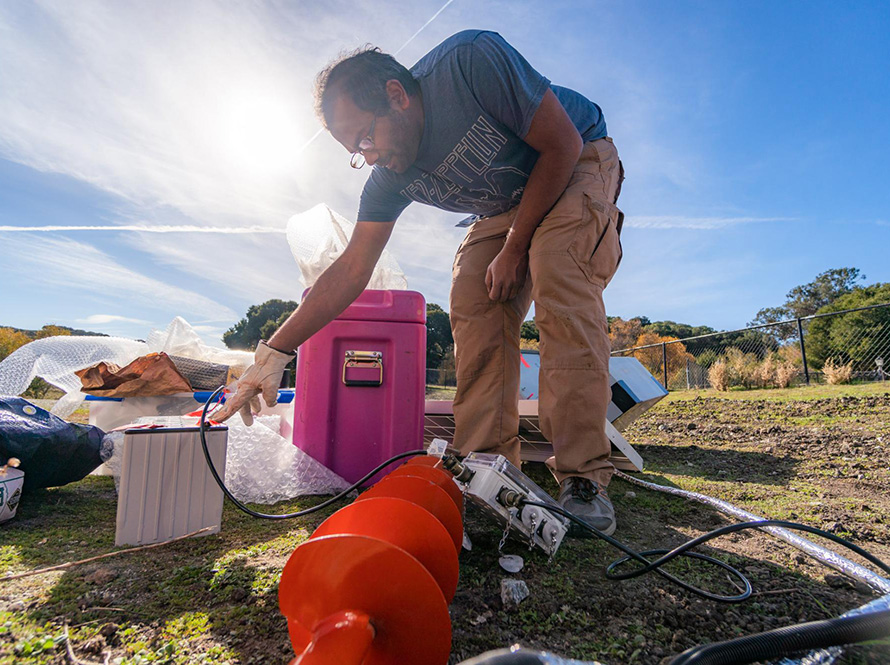
To make sure our buildings and infrastructure are earthquake-safe, we must understand how seismic activity affects different structures. EGD scientists are engaged in research designed to help fill in the gaps and provide resources for researchers and engineers to study earthquakes across scales, from the initiation of seismic waves at the fault rupture site deep underground, to the interactions between shaking soil and individual structures at the surface. They have:
- Developed an exascale computing simulation framework for unprecedented, multi-scale resolution of fault-to-structure earthquake simulations
- Established a unique large-scale experimental facility to study soil-structure interactions and validate models of the surface-subsurface interface
- Deployed newly developed in situ optical sensors to measure building deformation for rapid structural integrity analysis



Recent Publications

Our experts are monitoring how movement along the San Andreas Fault–one of the world’s largest active faults, running roughly 750 miles along the length of California–impacts underground rock in the area. This research has implications for fields like geothermal power generation, oil and gas extraction, and underground CO2 storage.